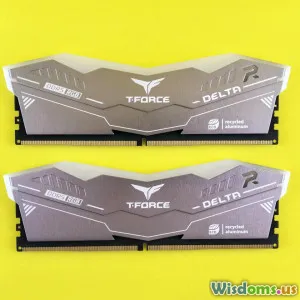
Ray Tracing Is It Really Worth the Hype for Modern PC Games
9 min read An in-depth analysis of ray tracing’s impact on modern PC games, evaluating graphical benefits, performance costs, and whether it justifies the current hype. (0 Reviews)
Ray Tracing: Is It Really Worth the Hype for Modern PC Games?
Imagine stepping into a virtual world where light behaves exactly as it does in reality — shadows cradle around corners with breathtaking nuance, reflections ripple realistically off puddles, and global illumination bathes every environment in natural warmth. This is the promise of ray tracing, the cutting-edge rendering technique revolutionizing visual fidelity in PC games. But as the buzz grows loud and graphics tech races forward, gamers and developers alike face a critical question: Is ray tracing truly worth the hype in today’s gaming landscape?
Understanding Ray Tracing: Beyond the Buzzword
Ray tracing is a rendering method that simulates the physical behavior of light, tracing the path of individual rays as they bounce, reflect, transmit, and scatter through a virtual scene. Unlike traditional rasterization, which approximates lighting by projecting polygons and textures, ray tracing calculates accurate lighting interactions to create hyper-realistic effects such as precise reflections, refractions, and ambient shadows.
First developed for CGI in films, where rendering time per frame was measured in minutes or hours, ray tracing has only recently become feasible for real-time applications like gaming thanks to advances in hardware — notably, GPUs with dedicated RT cores like NVIDIA’s RTX series and AMD’s RDNA 2 architecture.
The Case for Ray Tracing in Modern PC Games
Visual Fidelity: A Leap in Realism
Ray tracing directly impacts key visual elements that define immersion:
- Reflections: Games like Cyberpunk 2077 showcase ray-traced reflections that accurately display dynamic objects and high-detail surfaces, dramatically enhancing environmental believability.
- Shadows: Precise soft and contact shadows mimicking how light naturally diffuses, avoiding the harsh or pixelated shadows common in rasterized lighting.
- Global Illumination (GI): Realistic light bouncing that adds subtle color bleeding and soft indirect lighting, enriching scene depth — seen in Minecraft RTX, where natural window light floods interiors convincingly.
According to John Carmack, a pioneer in 3D graphics, "Ray tracing provides a path to consistent and high-quality lighting, something previous methods struggle with across a variety of scenes."
Immersive Gameplay and Narrative Impact
Lighting and atmosphere deeply influence mood and gameplay decisions. Consider horror games relying on shadow play to generate tension; ray tracing can add authenticity and unpredictability to such elements, enriching player engagement.
Adoption in Industry Standards and APIs
Major APIs like Microsoft’s DirectX Raytracing (DXR) and Vulkan RT are encouraging widespread integration, indicating that ray tracing is not just a niche feature but a potential standard.
The Performance Conundrum: What Do You Trade?
Hardware Requirements
Ray tracing is computationally intensive. Even with hardware acceleration, it demands significant GPU resources. For instance, tests show enabling ray tracing on Control at 4K resolution can drop frame rates from a smooth 60+ fps down to under 30 fps on mid-range GPUs — a steep compromise.
Balancing Quality and Playability
Many games offer settings to toggle ray tracing effects or lower their quality to maintain higher frame rates — reflecting a compromise between visual dazzlement and smooth gameplay. Competitive gamers often disable ray tracing to preserve maximum responsiveness.
Cost Implications
Upgrading to newer GPUs with RT cores like the NVIDIA RTX 4070+ or AMD RX 7900 series often requires substantial investment, raising questions about the democratization of ray tracing technologies.
Real-World Example: Ray Tracing in "Cyberpunk 2077"
CD Projekt Red’s Cyberpunk 2077 was among the early high-profile games to embrace ray tracing. While reviewers lauded the game’s atmospheric depth and reflections, the actual experience often exposed compromises:
- Quantum leaps in realism were offset by drastic performance hits.
- Players without top-tier hardware found themselves forced to disable ray tracing altogether.
Subsequent patches and DLSS (Deep Learning Super Sampling) helped mitigate performance issues, hinting at a future where both quality and performance might harmonize.
Alternative Techniques and Hybrid Approaches
Given the demand spike caused by fully real-time ray tracing, many developers blend ray tracing with optimized rasterization.
- Hybrid Rasterization-Ray Tracing: For example, a game may ray trace only reflections or shadows, while other effects use traditional methods.
- Temporal and Spatial Upscaling: Technologies like NVIDIA DLSS and AMD FSR leverage AI or algorithmic enhancements to upscale lower-resolution ray-traced images, preserving performance.
While less groundbreaking than full-scene ray tracing, these approaches deliver tangible graphical benefits accessible to a broader range of hardware.
Future Outlook: Is Ray Tracing the New Standard?
As GPU technologies mature and APIs improve, ray tracing performance is steadily improving. Analysts predict that within 3-5 years, most mid to high-end PCs will handle ray tracing at acceptable frame rates.
Beyond PC, consoles like PlayStation 5 and Xbox Series X come with ray tracing support, accelerating its adoption lexicon across game development.
Moreover, emerging advancements like NVIDIA’s RTX IO promise faster asset streaming directly to GPUs, boosting real-time ray tracing efficiency.
Final Assessment: The Verdict on Ray Tracing's True Value
When weighing the pros and cons, the answer depends heavily on user priorities:
- For Visual Purists: Ray tracing offers a visually transformative experience that justifies the cost in modern, story-driven, or single-player games.
- Competitive and Casual Gamers: The performance cost may not be worthwhile; smooth gameplay often trumps extra graphical polish.
- Future-Proofing and Enthusiasts: Investing in ray tracing-capable hardware assures access to upcoming titles and innovations where ray tracing could be more omnipresent.
Ray tracing is more than a flashy feature; it marks a paradigm shift in graphical realism. While it currently carries performance trade-offs, its trajectory suggests that the hype is justified — we are witnessing the dawn of a new era in game graphics. As the technology matures, embracing ray tracing will likely become an integral part of the ultimate gaming experience.
Ultimately, is ray tracing worth it today? If you crave striking visuals and own or plan to acquire capable hardware, it certainly is. If your hardware is more modest or prioritize smooth frame rates in competitive titles, patience may be the wiser path.
One thing is certain: ray tracing is here to stay, shaping the future of how games look and feel. Players and developers alike should prepare for this luminous revolution.
Sources:
- NVIDIA RTX Technology White Papers
- CD Projekt Red Official Patch Notes
- Digital Foundry Performance Analysis on Ray Tracing
- DirectX Raytracing API Documentation
- Quotes from John Carmack on Lighting Technologies
Rate the Post
User Reviews
Popular Posts
















